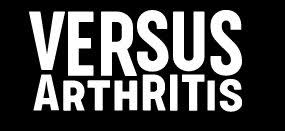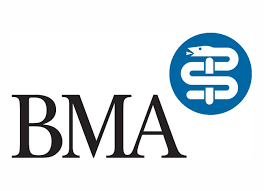Hip pain is often felt deep in the groin. If you have constant pain in your hip which is not helped by taking simple painkillers and if there is significant degenerative change in your hip then you may benefit from hip replacement surgery.
Mr Brew will explain in detail at your consultation why you may benefit from a hip replacement and answer any of your questions.
The hip is a ball and socket joint. The ball is found at the top of the thigh bone (femur) and the socket is in the pelvis (acetabulum). The normal ball and socket joint of your hip allows for the large and stable range of movement required of your hip for activities of normal daily living such as sitting, walking and running.
A hip replacement involves removing the degenerate ball from the top of the thigh bone (femoral head) and inserting a metal stem in the top of the thigh bone with a new metal or ceramic head on top. The degenerate socket is also removed by using special spherical graters to reshape the socket to allow insertion of a new cup (acetabular component).
These components can be attached to the bone with special bone cement (cemented) or inserted as a scratch fit allowing bone to grow onto them in time (uncemented). The new artificial ball and socket joint acts to improve the pain and range of movement in the hip.
The vast majority of hip replacements are performed under spinal anaesthetic as this has some benefits over a general anaesthetic such as better post-operative pain relief, less side effects and the ability to eat and drink soon after your operation.
If you wish to made sleepy during the operation you will be able to discuss this with the anaesthetist.
Occasionally a general anaesthetic is required if a spinal anaesthetic is not possible or for patient preference. The anaesthetist will discuss this with you before your operation.
A hip replacement usually takes between 1-2 hrs but the times vary depending on the complexity of the surgery.
You will be admitted on the day of your operation and seen by Mr Brew and his anaesthetist on the ward before surgery where your consent for your hip replacement will be re-confirmed and any final questions answered. A mark will be placed on your operative leg before you are transferred to theatre. On your arrival in theatre you will be greeted by the anaesthetist again in the anaesthetic room where if you have any further questions they can be answered before your anaesthetic is administered.
You will be positioned on your side in the anaesthetic room using positioning devices placed in front and behind your pelvis to hold you comfortably and safely during the operation. A warming blanket and some drapes will be placed around you. A cleaning solution will be applied to your skin before proceeding into theatre.
Once inside theatre your leg will be painted again with a special antiseptic solution to help reduce the risk of infection. This will leave your leg looking a slightly odd (orange) colour and may take a few days to wash off afterwards but is nothing to be worried about.
Your leg will then be covered with sterile surgical drapes and preparations for surgery will be made with the surgical team. If you have a spinal anaesthetic you may hear the various checks which take place between the surgical team but usually the anaesthetist will have given you something to relax you so often you won’t remember.
At the end of your operation you will have dressing placed over the wound before preparations are made for your transfer to recovery.
You will be taken to the recovery area of theatre where you will be made comfortable and the nurses will check your observations and you will be reviewed by Mr Brew before being transferred back to the ward.
The physiotherapists will get you standing and taking a few steps on the day of your surgery, however if you had your operation later in the day this may take place the following morning.
It is important the dressing over your hip is kept in place until the wound has fully healed which takes approximately 14 days. It is also important to keep your wound dry until it is fully healed to minimise the risk of infection.
No. The wound will be closed with absorbable stitches under the skin and with skin glue. Occasionally you will require trimming of some suture ends once the dressing has been removed at 14 days.
Mr Brew will see you on the ward following your operation and will review your progress in the outpatient clinic 6-8 weeks following your surgery.
The recovery process requires hard work performing all the exercises the physiotherapists will set you. It is really important to do these exercises regularly to ensure your recovery progresses at a satisfactory rate.
By 6- 8 weeks following your surgery you can expect to be walking without sticks but it can take 3 months or even longer to make a full recovery.
Yes. Following a hip replacement you are at risk of dislocation if you are not careful with your hip. You must follow the advice given to you by Mr Brew and the physiotherapists. The risk of dislocation is highest in the early post-operative period whilst the joint capsule and soft tissues that surround the hip joint have not fully healed. Even though your skin wound may heal in 10-14 days the deep structures surrounding your hip take much longer (6-12 weeks).
Remember not to sit on any low chairs or sofas and avoid squatting down. It is important to keep your knee below the level of your hip at all times.
There are no fixed rules but Mr Brew advises to wait at least 8 weeks before you go on a car journey and avoid cars with low seats due to the risk of dislocation of your hip. Consider using a cushion to raise the seat height.
It is advisable not to fly for at least 3 months following your hip replacement due to the increased risk of venous thromboembolism (blood clots developing in your leg that can spread to your lungs). This particularly risky for long-haul flights. If you are considering flying soon after your hip replacement please discuss this with Mr Brew at your postoperative consultation.
There are certain actions that can help mitigate the risks such as performing exercises whilst seated in the plane (wiggling your toes and moving your feet up and down and going for regular walks) as well as wearing antiembolism stockings.
You should not drive for 8 weeks following your hip replacement and not before you feel completely fit and well to do so. You should practice working the car pedals on the drive and performing an emergency stop whilst stationary.
If your hip becomes painful doing these activities either suddenly or afterwards you should not drive. You should inform your insurer before driving as recent surgery can affect your policy.
This depends on what type of job you do. If you have a desk-based job you should be able to return at 8 weeks but if you have a heavy manual job you made need a few more weeks to recover fully. Mr Brew will discuss this with you at your follow up consultation. Most people are back at work by 3 months.
Total Hip Replacement surgery is one of the most successful operations performed.
Unremitting arthritic hip pain is one of the most severe pains to endure, so if your pain is originating from an arthritic hip you can expect to gain significant pain relief and a considerable improvement in your quality of life.
Mr Brew will explain the risks and rewards of undergoing a hip replacement at your consultation and answer any questions you may have.
A hip replacement is a routine operation but it is a major operation and therefore there are always some risks involved. These risks include but are not limited to:
More common: (2-5%)
Deep vein thrombosis, Bleeding, Altered leg length, Joint dislocation, Prosthesis wear/loosening pain
Less common: (1-2%)
Infection
Rare: (<1%)
Nerve and blood vessel damage, Fracture, Pulmonary Embolism, Heart Attack, Stroke, Chest infection and Death
Running or jogging on a hard surface is not recommended as this can cause excessive stresses on your joint replacement which could cause early wear and failure. It is recommended therefore to adopt other non-impact exercises to keep fit such as swimming or cycling.
Skiing is not recommended after a hip replacement due to the high impact nature of this activity. This places significant stress on your hip and risks serious injury to your hip replacement if you were to fall over at speed. The twisting forces involved could result in your hip dislocating and the bone around it breaking (fracture dislocation).
You can of course go skiing at your own risk but you need to declare you have had a joint replacement to your travel insurers.
Cycling can be a good way of building up muscle strength in your leg as well as improving your overall fitness following surgery. It is important to have the saddle high to keep your knees below the level of your hip when pedalling. It would be sensible to start gently on a stationary exercise bike until you gain confidence.
Swimming is an excellent form of exercise as the water supports your joints whilst exercising. It can help build your strength and over all fitness. You may find breast stroke uncomfortable in the first 3 months and can discuss various strokes with your physiotherapist.
If your problem is within office hours please call the ward where you were treated and the nurse in charge will contact Mr Brew if necessary. This contact information will be given to you before you are discharged. If your problem is urgent and out of hours please go to your nearest Accident and Emergency Department.







